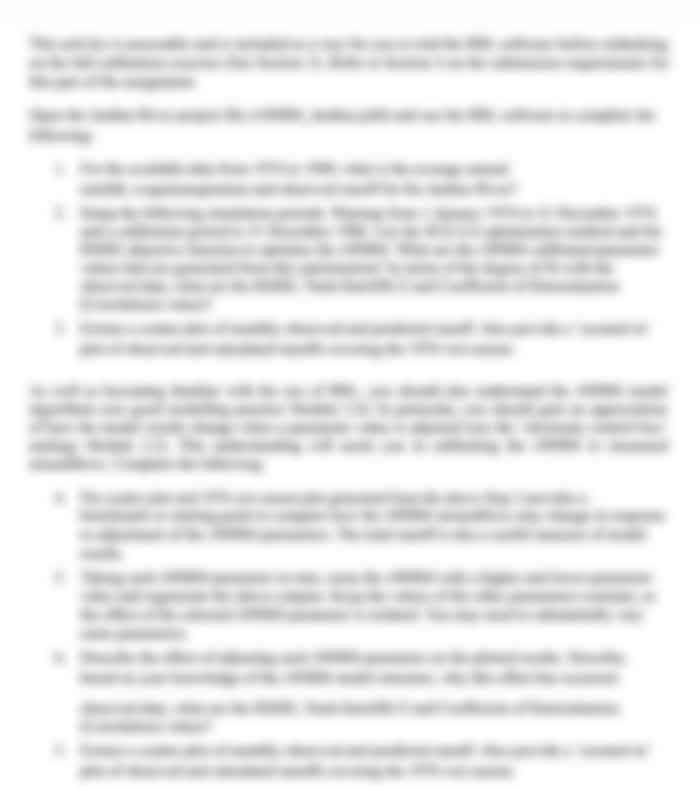Administer medication to individuals and monitor the effects assessment
Assignment:
- Understand legislation, policy and procedures relevant to administration of medication
|
1.1 Identify current legislation, guidelines, policies and protocols relevant to the administration of medication |
|
Medicines Act 1968 (amended). Misuse of Drugs Act 1971 (amended). Health and Safety at Work etc. Act 1974. Health and Social Care Act 2008 (Regulated Activities) Regulations 2010. Regulations and guidance Misuse of Drugs Regulations 2001. Domiciliary Care Agencies Regulations 2002. Control of Substances Hazardous to Health (COSHH) Regulations 2002. The Handling of Medicines in Social Care (Royal Pharmaceutical Society 2007). Standards for Medicines Management (Nursing and Midwifery Council 2007). Human Medicines Regulations 2012. Administration of medicines in care homes (with nursing) for older people by care Assistants (Department of Health, 2013). The Controlled Drugs (Supervision of Management and Use) Regulations 2013. The Human Medicines (Amendment) Regulations 2015. Policies and protocols National Institute for Health and Care Excellence (NICE) Managing medicines in care homes Social Care Guideline (SC1), 2014. Policies and protocols of own setting. Learners Add: Write a quick overview of the policies and procedures in respect of administering medication in your workplace. |
|
2.1 Describe common types of medication including their effects and potential side effects |
|
Common types of medication and uses Antibiotics to treat bacterial infections. Analgesics for pain relief. Anti-inflammatory (steroids and non-steroids) to reduce inflammation. Antihistamines to relieve allergy symptoms. Hormones to replace or stabilise hormone balance. Cardiovascular (to increase cardiac output. Diuretics to increase fluid excretion (diuretics). ACE inhibitors . (To relax arteries and veins to reduce bp) Anticoagulants to reduce blood clotting. Psychotropic medication (anti-depressants, mood stabilisers, anti-anxiety). Cytotoxic for cancer treatment. Laxatives to treat constipation. Antacids to reduce gastric acidity. Learners for each of the above give examples in the form of a sentence as well as the possible side - affects for each. For instance Cardiovascular relates to the heart and blood vessels. Changes in lifestyle (Diet / stop smoking, exercise) can reduce the chances of future heart disease after a heart attack. Beta Blockers are an example of a prescribed medication, which are prescribed to cause the heart to beat more slowly and with less force, which lowers blood pressure. The possible side effects are dizziness, nausea, sleeping difficulties and cold extremities due to affecting the blood supply to hands and feet. |
|
2.2 Identify medication which demands specific physiological measurements |
|
Physiological measurements are used to monitor the reactions of a person. This can be done by observing the person, eg pupil dilation, breathing rate, pulse rate, skin colour, perspiration, blood sugar levels Some examples medication requiring specific, physiological measures Insulin for type 1 diabetes, - physiological measurements - blood glucose checks. Warfarin to reduce risk of blood clots, to thin blood, physiological measurements -- blood tests. Heart regulators, e.g. Digoxin; - med to treat irregular heartbeat - physiological measurements - checking pulse. Learners list a number of medications prescribed in your workplace and explain what physiological measurements need to be in place for each before and after if required. |
|
2.3 Describe the common adverse reactions to medication, how each can be recognised and the appropriate action(s) required |
|
Common adverse effects of medication Analgesics, e.g. paracetamol: - irritation of the stomach liver damage (rare) sleep disturbances. Antibiotics: diarrhoea nausea fungal infections kidney problems (rare) blood disorders (rare) increased ultraviolet sensitivity (rare) deafness (rare). Antidepressants, e.g. paroxetine: blurred vision dizziness drowsiness increased appetite shaking, trembling constipation sweating. Anticoagulants, e.g. warfarin: excess bleeding passing blood in urine, faeces severe bruising prolonged nosebleeds blood in vomit unusual headaches (rare) sudden, severe back pain difficulty breathing (rare) chest pain (rare) rashes diarrhoea nausea vomiting. Actions to take Seek help. Inform manager who will inform prescribing doctor and pharmacist. Record reaction using agreed protocols. Stop administration. Regular monitoring of condition. Follow procedures of setting. Recognise boundaries of own role. Learners, write each bullet point as a sentence and expand on each of the bullet points in respect of actions to be taken. For instance Analgesics are generally known as painkillers such as paracetamol and aspirin. Generally, they can be bought off the shelf however it is important to consult a GP before administering as there could be contra-indications when taken with other medications. Possible side effects include stomach irritations, liver damage (rare) and disturbed sleep. Actions to be taken For instance Seek help - all medications should be taken in line with the PIL. Any adverse reaction to medication taken, help should be sought straight away. G.P advice should be sought or in more urgent cases I would ring 999 for an ambulance. Managers, supervisors need to be advised and all relevant records need completing. |
|
2.4 Explain the different routes of medicine administration |
|
Administration routes Oral: tablets capsules liquids. Inhalation, nasal, oral. Injected: intravenous subcutaneous intramuscular epidural. Topical creams, ointments, lotions. Drops to ear, nose, eyes. Per rectum suppositories, enemas. Per vagina pessaries, creams. Transdermal, e.g. patches. Learners write each as a sentence i.e how you administer the medication in your workplace. For instance Tablets are taken orally, we have blister packs that are prepared by the local chemist and water is taken with the tablets to support swallowing. It is important to always follow the PIL and the medication risk assessment for each service user. |
|
3.1 Explain the types, purpose and function of materials and equipment needed for the administration of medication via the different routes |
|
Administration techniques Oral: medication cups and spoons some tablets can be crushed. Transdermal: clean area, wash hands before and after administration of patches check instructions for correct site of application. Topical: use of Personal Protective Equipment (PPE), e.g. gloves, apron wash hands before and after use. Instillation: (i.e eye drops) use of gloves wash hands before and after administration. Intravenous only administered by a nurse or doctor. Rectal/vaginal: use of gloves, aprons provision of bedpan in case of need. Subcutaneous: (injection, short needle under skin between skin tissue and muscle) use of specific syringes delivered by trained staff. Intramuscular injections can only be given by a nurse or doctor. Inhalation: use of gloves wash hands before and after use of equipment. Inhalers Aids for administering medication, e.g.: medicine pots measuring spoons oral syringe nebuliser Monitored Dosage Systems (MDS) Learners For each different routes, explain what materials and equipment is required i.e needles and needles disposal box for injections |
|
3.2 Identify the required information from prescriptions / medication administration charts |
|
Required information from prescriptions/medication charts Name of individual. Age of individual. Name of medication. Method of administration, e.g. oral, topical. Dosage. Frequency of dosage. Last dose. Specific requirements, e.g.: before, with, after food specific timings swallowed whole dependent on test results (Doseage may change based on results) condition of individual, e.g. pulse, respiration rates. Learners look at the above information and expand on this by writing sentences For instance: It is a legal requirement to ensure that MAR sheets have all the required information on so that the administrator can do so as safely and as possible. Information required is: Name of the person who is to receive the medication, the persons date of birth, etc (see above). There may also be specific requirements for each medication to be taken such as before, with, or after food etc (see above). This information can also be found on the prescription and the public information leaflet that goes with each individual medication. |
|
4.2 Explain ways to ensure the appropriate timing of medication |
|
Taking medicine on time, as prescribed, is essential to making sure your body has an effective amount of the drug at all times. Learners, give the above information and then state how you ensure that service users receive their medication at the appropriate times. For instance: P.I.L. Mar Sheets Blister packs Labels Care plans Being undisturbed during meds rounds. Learners: Explain the 8 rights of administering medication |
|
5.3 Describe how to report any immediate problems with the administration and take the appropriate action without delay |
|
Reporting immediate problems Inform manager, doctor, prescriber of, Ambulance: adverse reactions, e.g. vomiting individual refuses to comply medication is spilt individual had difficulty taking the medication individual experienced excess pain/discomfort. Actions to be taken in relation to maladministration of medication Errors, e.g.: wrong dose medication not given given to the wrong individual. Actions: immediately report to line manager, GP record incident, e.g. MAR, incident report form. Whilst help is on its way you may have to: Monitor individuals condition Observe skin colour, e.g. pallor, excessive redness. Check pulse and respiration rates. Note any discomfort, e.g. ability to stand, sit. Report adverse reactions immediately in line with agreed policies and procedures of the setting/legislation/regulations and guidelines. Learners: Use the information above and write about your understanding of such. |
|
5.5 Explain why it may be necessary to confirm that the individual actually takes the medication and does not pass the medication to others |
|
Necessity of confirming that medication has been taken and not given to thers Condition of individual, e.g. dementia, confusion. Previous history of occurrences. Legal requirement. Preventing harm to both individuals. Prevent adverse reactions in others. Best interests of the individual. Duty of care. Part of service level agreement (SLA)/contact of employment. Learners: For each bullet point, explain your understanding by writing a sentence for each. |
|
5.8 Describe how to dispose of out of date and part-used medications in accordance with legal and organisational requirements |
|
Procedures for the safe and secure disposal of medication and equipment Organisational procedures (local, national). (Learners, describe your own companys policies and procedures for the disposal of different medications) Including Recording of disposal of equipment, e.g. syringes, needles. Returning to pharmacy Collection of returns from agencies, registered waste disposal companies. . Any special measures for controlled drugs in care homes registered to provide nursing care. If supplied as a stock for the care home an authorised person must witness the disposal. To meet legal requirements. Learners: Please see the below list and explain in sentences why the safe disposal of medication is important. Legal requirement / Policy requirement. Ensuring medication is not taken accidentally by others in the setting, e.g.: confused individuals children visiting the setting. ensure medication is not taken accidentally by others prevent infection from needles prevent theft prevent misuse protect the environment |
Bibliography:

